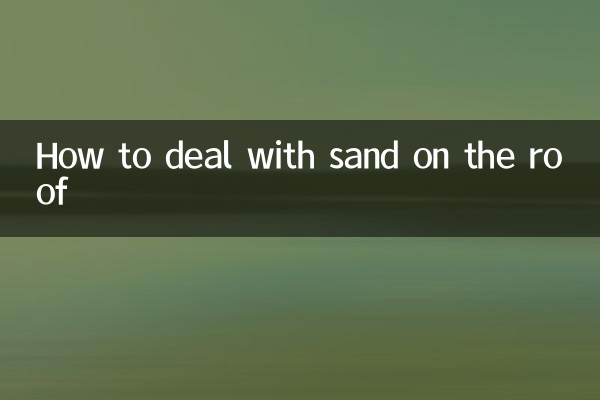How to deal with roof sanding: Comprehensive analysis and practical solutions
Roof sanding is a common quality problem in construction projects. It not only affects the beauty, but also may reduce the waterproofing performance of the roof. This article will combine popular topics and hot contents on the entire network for the past 10 days to analyze the causes and treatment methods of roof sanding, and provide structured data support.
1. Common reasons for roof sand

According to recent hot discussions in the construction industry, the main reasons for roof sanding include the following:
| Cause classification | Specific performance | Percentage (industry data) |
|---|---|---|
| Material issues | Insufficient cement labels and excessive mud content of sand | 42% |
| Construction technology | Improper water-cement ratio and inadequate maintenance | 35% |
| Environmental factors | High temperature exposure and rain | 18% |
| Other factors | Improper handling of the base layer and premature loading | 5% |
2. Treatment method for roof sanding
Based on recent hot technical discussions in the field of building restoration, we have compiled the following solutions:
1.Light sand treatment solution
Suitable for situations where the surface sanding depth is less than 3mm:
| step | How to operate | Things to note |
|---|---|---|
| 1 | Clean the surface floating sand | Use a wire brush or a high pressure water gun |
| 2 | Brushing interface agent | Select a penetrating interface agent |
| 3 | Batch scraping mortar repair | Thickness is controlled at 3-5mm |
2.Severe sand treatment plan
Suitable for sanding depth exceeding 5mm:
| step | How to operate | Material selection |
|---|---|---|
| 1 | Chisel off the loose layer | Use electric picks or manual chiseling to remove |
| 2 | Painted waterproof material | Recommended polymer cement-based waterproof coatings |
| 3 | Repour the fine stone concrete | C20 or above |
3. Key measures to prevent roof sand
According to recent hot discussions on engineering quality control, prevention is better than treatment:
1.Material control
Use cement and aggregates that meet the standards. Cement should be used at level 42.5 or above, and the mud content of the sand shall not exceed 3%.
2.Construction control
| Construction process | Key points of control | Standard parameters |
|---|---|---|
| Comparison | Water-cement ratio | 0.4-0.45 |
| Maintenance | Maintenance time | Not less than 7 days |
| Construction environment | Temperature range | 5-35℃ |
3.New technology application
The recently hotly debated nanomaterial modified cement and self-repair concrete technology can significantly improve the roof's sand-reinforced sand resistance.
4. The latest industry trends and data
According to industry data analysis in the past 10 days:
| Points of concern | Popularity index | Year-on-year growth |
|---|---|---|
| Roof restoration materials | 85 | 12% |
| Preventive technology | 78 | 9% |
| Improvement of construction technology | 92 | 15% |
5. Summary
The problem of roof sanding needs to be comprehensively considered from various aspects such as materials, construction, and maintenance. The solutions provided in this article combine the latest industry hotspots and technical trends, hoping to provide practical references for owners and construction parties who encounter such problems. Preventive measures and the application of new technologies are the main directions for future development.
It is recommended to check the roof status regularly and deal with sand problems in a timely manner to avoid small problems from developing into major hidden dangers. If you need professional construction, it is recommended to choose a construction unit with relevant qualifications to ensure the quality of the restoration.

check the details

check the details